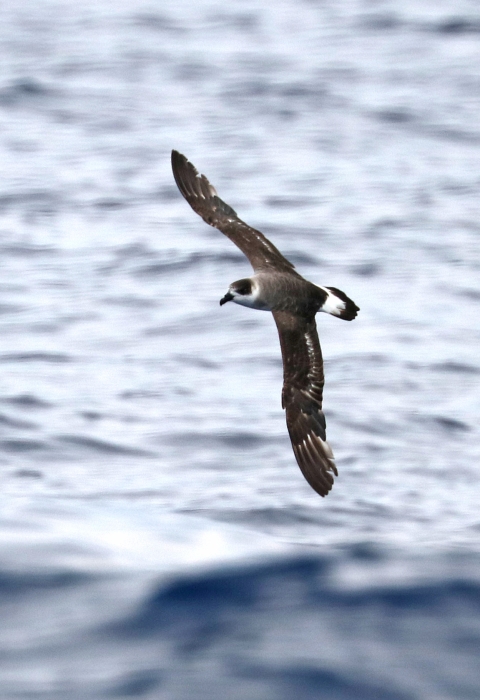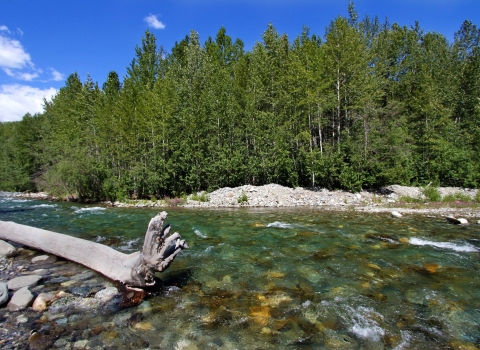Today, the U.S. Fish and Wildlife Service is finalizing the listing of the black-capped petrel as an endangered species under the Endangered Species Act (ESA).
Previously proposed as threatened in 2018, the Service reopened the comment period on its 2018 proposal to present significant new information relevant to consideration of the status of the species. This new information indicated threats to the species were more severe and imminent than described in the 2018 proposed rule. This new information has been incorporated in the updated Species Status Assessment (SSA) report included in the final rule.
"This listing represents an important step forward in protecting this remarkable seabird," said Mike Oetker, acting Service Regional Director. "By working hand-in-hand with our conservation partners and affected communities, we can tap into the best available science and on-the-ground expertise to inform our decisions. Through collaboration and teamwork, we hope to reverse the declines in black-capped petrel populations and ensure the long-term survival of this species."
Black-capped petrels are pelagic seabirds that only nest on the island of Hispaniola in the Caribbean. Known as one of the gadfly petrels because of their speedy, weaving flight, black-capped petrels are widely distributed and travel long distances to foraging areas in the western Atlantic and southern Caribbean basins and the central and northeastern Gulf of Mexico. Recent satellite tracking studies have also documented their use of near-shore areas off the northern coast of Central and South America. Officially known as the black-capped petrel in current ornithological literature, it is also known by several distinct common names throughout its range, like “diablotin” (French and Spanish-speaking range states), “chathuant” (Haiti), and “bruja” or “chanwan” (Cuba).
The ESA requires the Service to list species as endangered or threatened regardless of which country the species lives in. Benefits to the species include prohibitions on certain activities including import, export, take, commercial activity, interstate commerce, and foreign commerce. By regulating activities, the United States ensures that people under the jurisdiction of the United States do not contribute to the further decline of listed species. Although the ESA's prohibitions regarding listed species apply only to people subject to the jurisdiction of the United States, the ESA can generate conservation benefits such as increased awareness of listed species, research efforts to address conservation needs, or funding for conservation of the species in its range countries. The ESA also provides for limited financial assistance to develop and manage programs to conserve listed species in foreign countries, encourages conservation programs for such species, and allows for assistance for programs, such as personnel and training.
Major threats to the black-capped petrel include habitat loss and degradation due to deforestation and forest fires and depredation by nonnative mammals within its breeding grounds. Climate change will also continue to affect the species with increasing storm intensity and frequency, resulting in flooding of burrows and erosion of suitable nesting habitat.
Previously, the Service had determined that critical habitat for the species was not prudent. However, due to new information, the Service has determined there are factors affecting the marine habitat within U.S. jurisdiction, therefore, critical habitat is “prudent but not determinable” since we do not have enough information to complete that analysis. When critical habitat is not determinable, the ESA allows the Service an additional year to publish a critical habitat designation. We anticipate publishing proposed critical habitat for the black-capped petrel in 2024.
Today’s announcement comes as the ESA turns 50 years old in 2023. Throughout the year, the Department of the Interior will celebrate the ESA's importance in preventing imperiled species' extinction, promoting the recovery of wildlife and conserving the habitats upon which they depend. The ESA has been highly effective and credited with saving 99% of listed species from extinction.
This final rule will become effective on January 29, 2024.
Supporting materials used in preparing this rule, such as the species status assessment report, are available at https://www.regulations.gov, search for Docket No. FWS-R4-ES-2018-0043.
FOR FURTHER INFORMATION CONTACT: José A. Cruz-Burgos, Threatened and Endangered Species Program Coordinator, U.S. Fish and Wildlife Service, Caribbean Ecological Services Field Office, caribbean_es@fws.gov; telephone 786–244–0081. Individuals in the United States who are deaf, deafblind, hard of hearing, or have a speech disability may dial 711 (TTY, TDD, or TeleBraille) to access telecommunications relay services. Individuals outside the United States should use the relay services offered within their country to make international calls to the point-of-contact in the United States.
The mission of the U.S. Fish and Wildlife Service is working with others to conserve, protect, and enhance fish, wildlife, plants, and their habitats for the continuing benefit of the American people. For more information on our work and the people who make it happen, visit https://www.fws.gov/program/southeast-region. Connect with us on social media: Facebook, X (formerly known as Twitter), Flickr, and YouTube.

